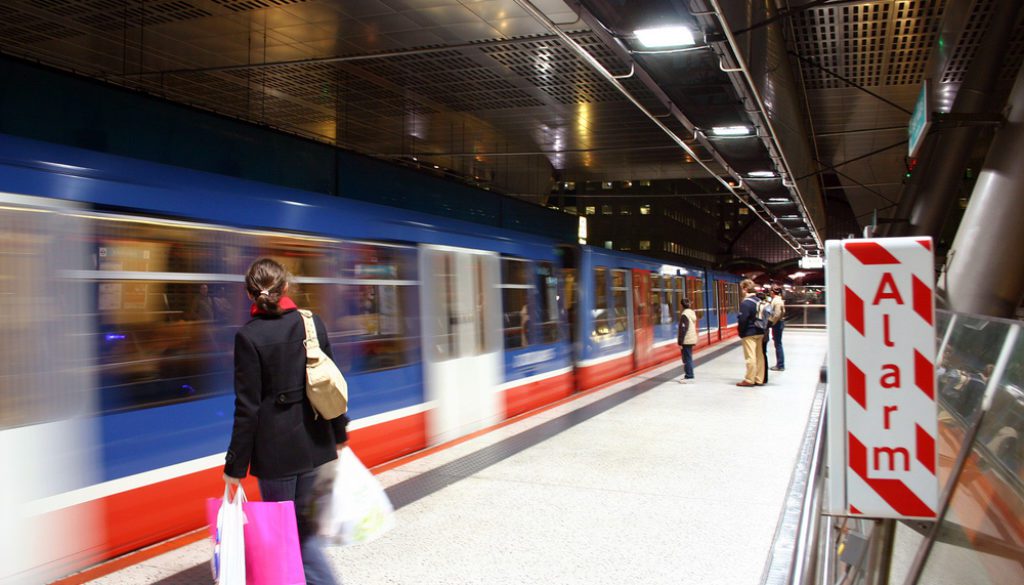Sécuriser les cibles vulnérables à l’aide de systèmes de notification de masse
A municipal building. A school campus. A shopping center. A train station. An outdoor music festival.
These locations are gathering places for work and fun, playing an important part in a community. These facilities or spaces, known as soft targets, have open environments likely with multiple access points, encouraging people to come and go freely. Yet these places can be some of the most vulnerable locations where residents and visitors gather.
What is a Soft Target?
The Department of Homeland Security’s Cybersecurity & Infrastructure Security Agency (CISA) calls these sites “soft targets and crowded places” and defines them as “locations that are easily accessible to large numbers of people and that have limited security or protective measures in place making them vulnerable to attack.”
These places include bars and restaurants, courthouses, hotels, houses of worship, schools, sports venues, tourist attractions, theaters, transportation systems or hubs, police/fire stations and legislative chambers, according to CISA. They don’t have to be buildings and can include open spaces, such as parks and pedestrian malls.
There’s been an increase in soft target attacks in recent years in the U.S. Some of these attacks include:
- 8 people died and 11 injured along New York’s Hudson River bike path in 2017.
- 11 people were killed and 6 injured at a Pittsburgh synagogue in 2018.
- 9 people died and 27 injured in an entertainment district in Dayton, Ohio, in 2019.
- 22 people were killed and 26 injured at an El Paso Walmart in 2019.
- 43 vehicle-ramming incidents occurred during 2020 protests.
The strain on public safety escalated last year with the coronavirus pandemic, as emergency managers, public safety personnel and local government officials contended with civil unrest, a recording-breaking year of severe weather and increasing questions about interactions between first responders and residents.
Now as residents and visitors return to going to businesses, school campuses, theaters, sports venues and other locations, there are concerns about how these challenges will affect the public’s safety. About 75% of survey respondents are either very or somewhat concerned about acts of violence in public places, such as concerts, festivals, shopping centers and schools.
This was one of the findings in Rave Mobile Safety’s 2021 Survey of Public Trust: Emergency Communication and Public Safety. Over 1,000 adults, age 18 and older, were recently asked to discuss their perspectives and expectations about public safety and emergency communication.
Ways to Protect Soft Target Locations
Officials have implemented physical boundaries at these locations. Many municipal buildings, houses of worships, schools, outdoor venues and other sites across the U.S. are now hardened with various safety and security measures, including limited entrances, perimeter fencing, doors with keycard access and bollards. Key stakeholders are also ramping up police and security presence, using landscapes as buffers, and shutting down streets with heavy foot traffic.
Oakland, Norwich, Connecticut, Bangor, Maine, and other cities and towns installed physical barriers to protect pedestrians from vehicle traffic. Officials in New York City, for example, put in over 1,500 protective barriers on sidewalks and plazas to protect pedestrians.
The Key Role of Communication in Soft Target Security
There are many challenges and complexities to safeguarding houses of worship, town/city buildings, schools, open-air markets and other sites. Time is crucial for emergency managers, 9-1-1 teams and first responders to respond to a soft target attack. These incidents can happen in seconds and last only for a few minutes. About 70% of gun-related active assailant events last only five minutes, while a third are over in less than two minutes, according to the FBI.
Clear, effective communication and coordination between agencies and departments — and within — will enable them to prevent, mitigate, respond to and recover from a soft target attack. Accurate information, specific directives, event tracking and reporting, and accessible resources all in one location will enable emergency managers, 9-1-1 telecommunicators, first responders and government officials to enact emergency plans faster and provide improved situational awareness.
Having a reliable critical communication and collaboration platform will also allow emergency managers, 9-1-1 telecommunicators, first responders and government officials to neutralize possible confusion, negate false rumors and minimize risks. The platform would include the following:
- Tactical incident collaboration tool: Launch an action sequence and those who are assigned certain tasks will receive alerts simultaneously. Tasks will be listed, show who they were assigned to, indicate the status of the tasks, and display additional notes, providing administrators with a detailed timeline.
- Emergency mass notifications: Send internal messages across agencies or departments and external messages out to the public simultaneously through text, email, voice calls, IPAWS, digital signage and desktop alerts — all through a single launch point. Residents can receive messages in the modes and languages they prefer, enabling these agency notifications to become the source of trusted information.
- Text to opt-in feature: Enable residents, visitors and tourists to sign up for alerts by texting a unique keyword to a short code.
- One-click mobile application emergency buttons: Allow employees to instantly connect to 9-1-1, first responders and necessary personnel simultaneously and share critical response data (e.g., location and type of emergency). By pressing a button, an emergency workflow begins and contacts responding emergency personnel. It also automatically triggers mass notifications, digital signage and more.
- Searchable facility data with geo-referenced floor plans: Develop building profiles with specifics (e.g., emergency exits, utilities and fire/security alarms). Provide a more detailed view of a building’s interior, including locked doors, access points and other potential obstacles. 9-1-1 teams and first responders will have more awareness of a site, allowing them to react quicker and allocate the proper resources.
- Two-way texting: Allow employees and residents to report suspicious activity and other concerns. Administrators can track information and discreetly communicate with the person in need. They can add contextual notes associated with a specific phone number, providing greater insight.





